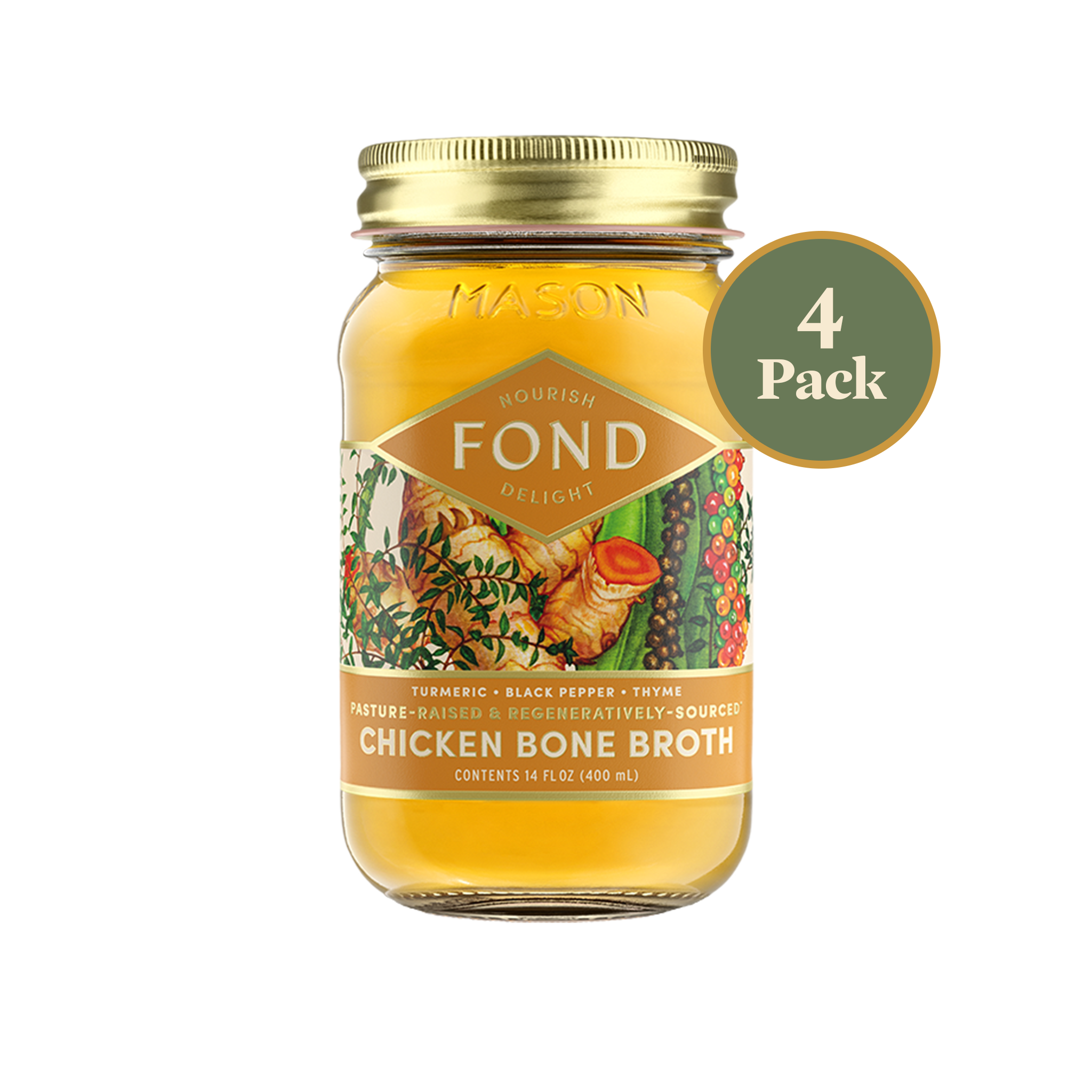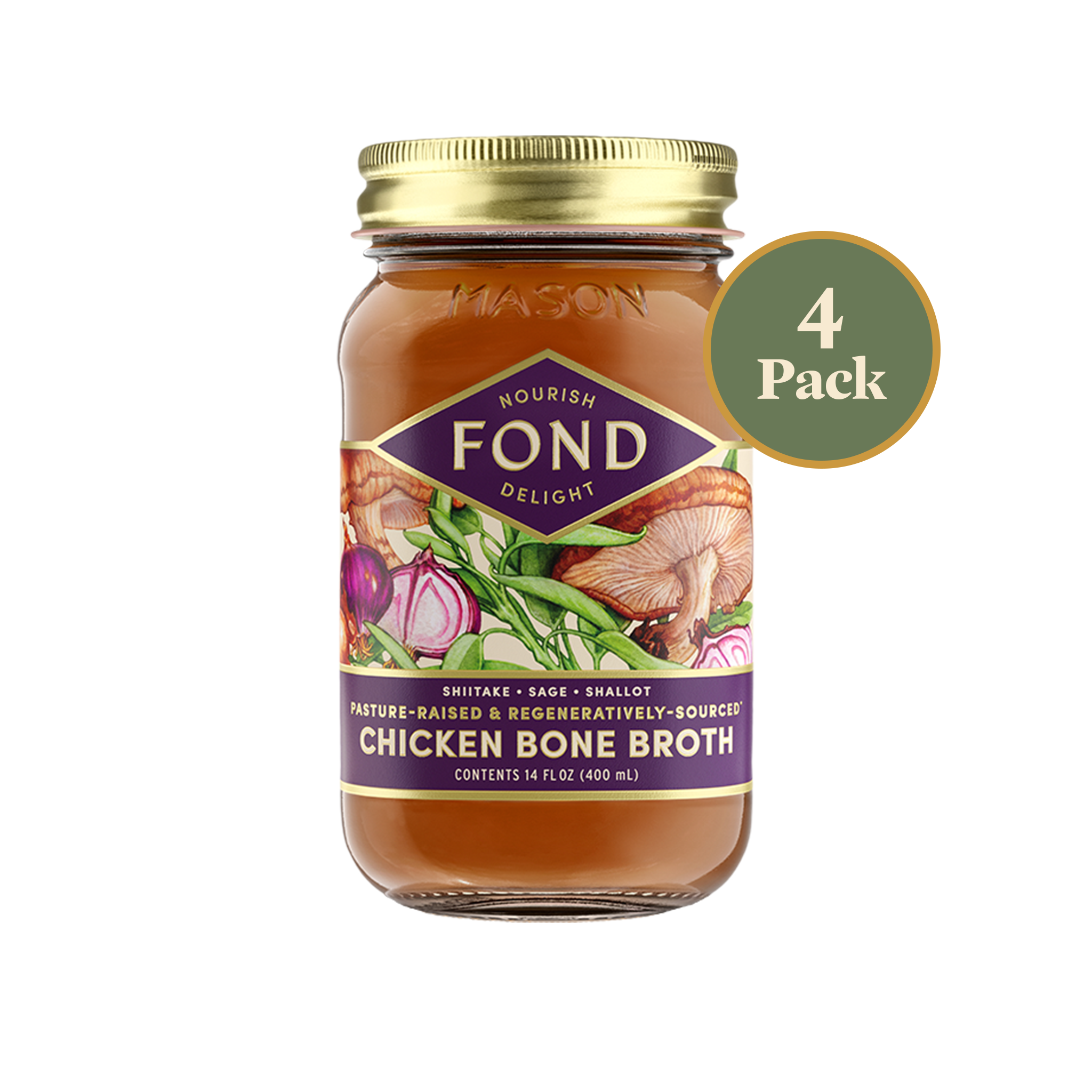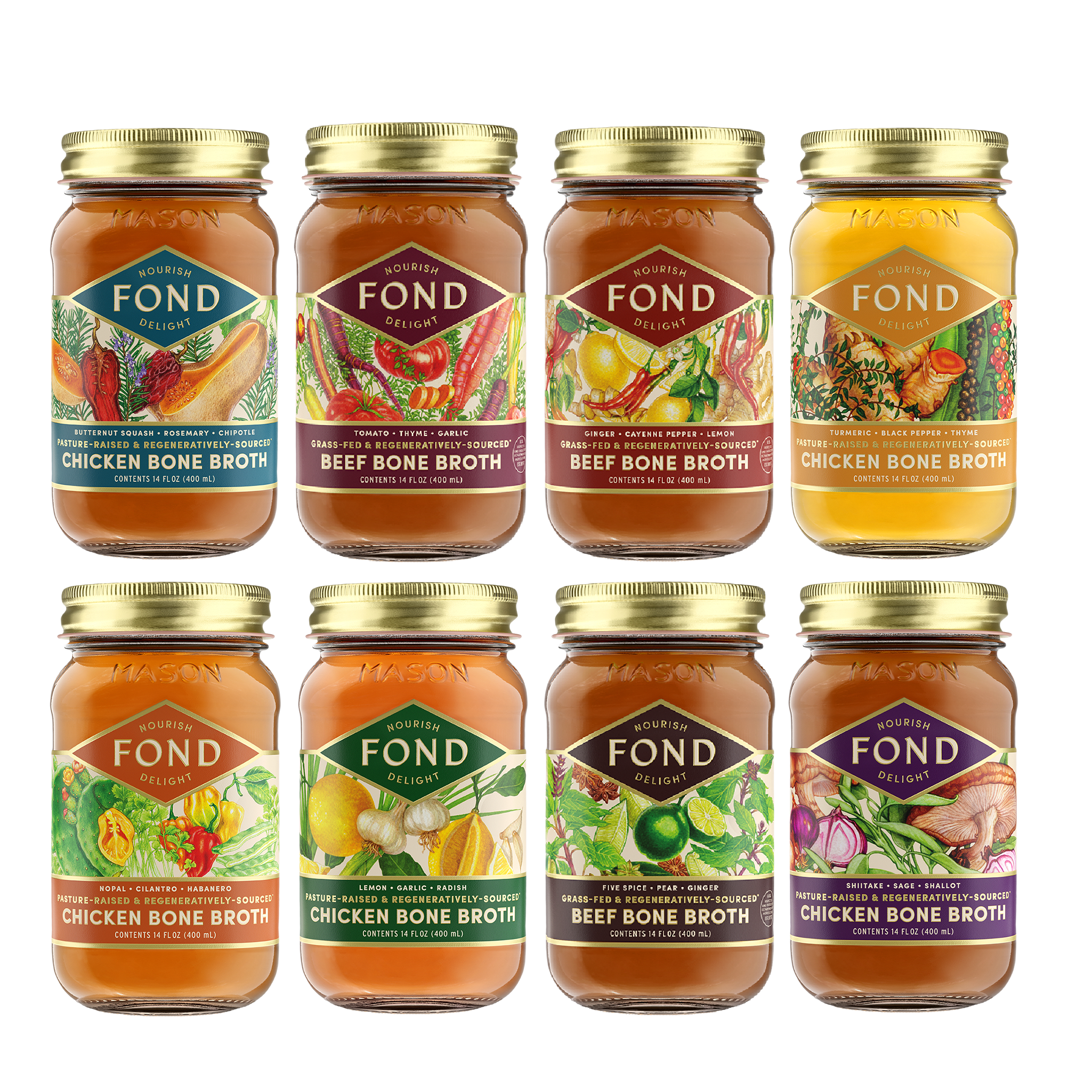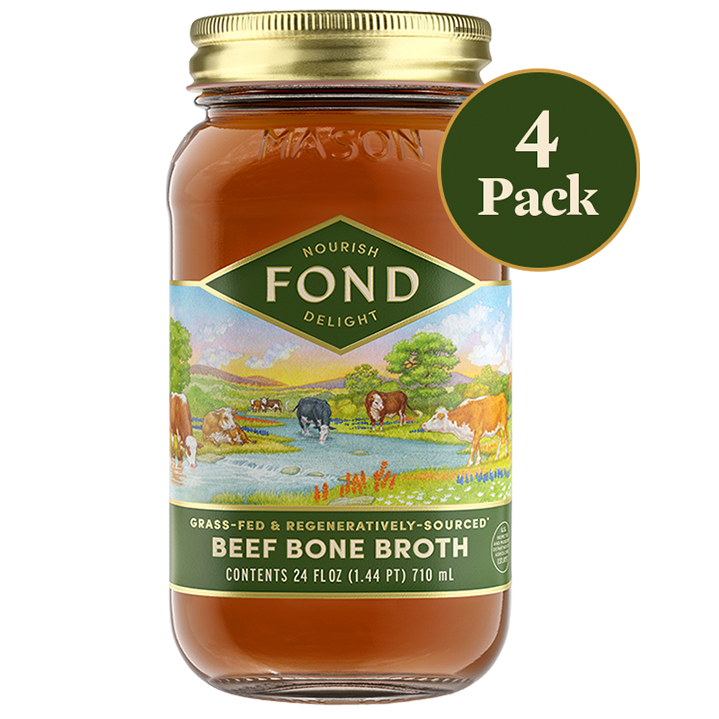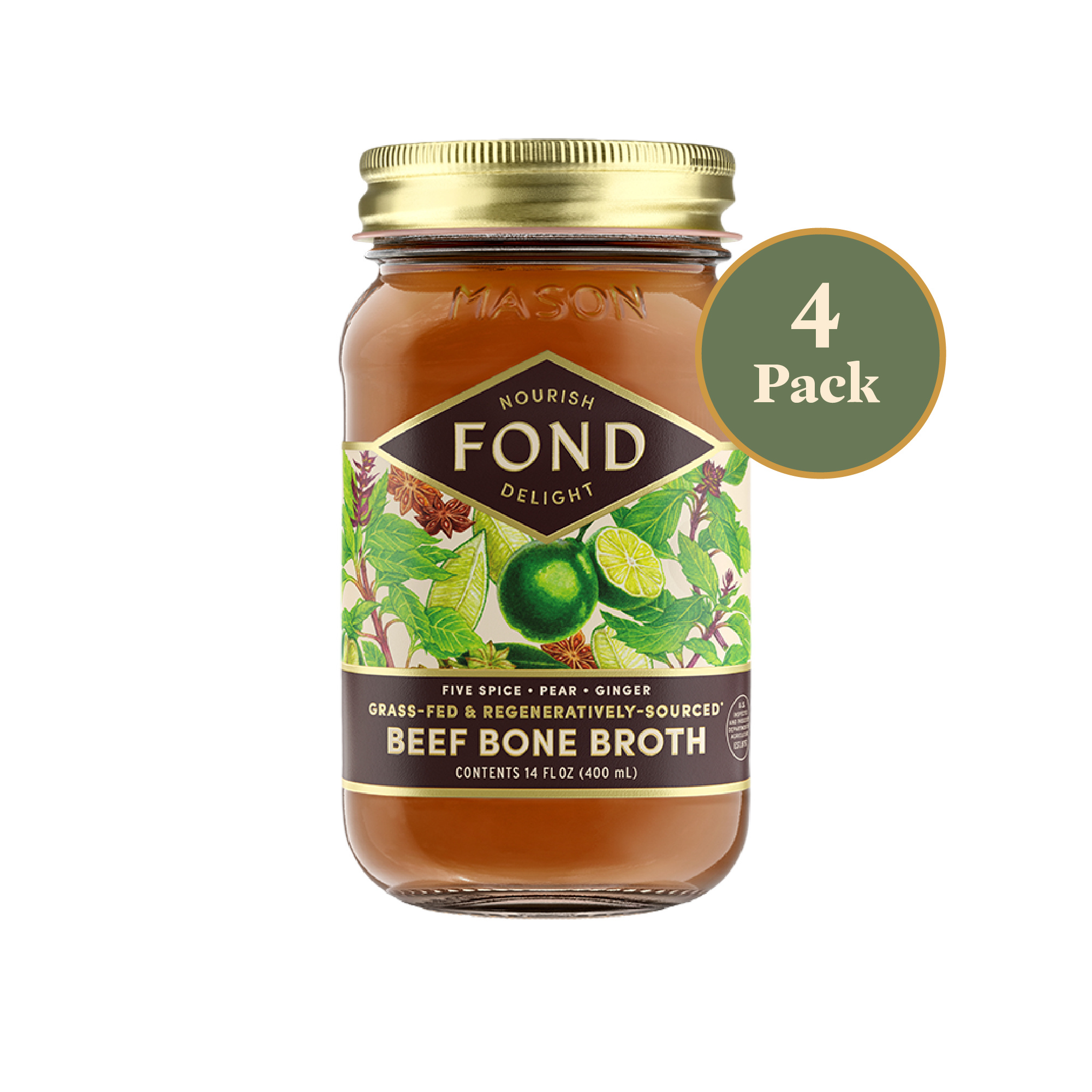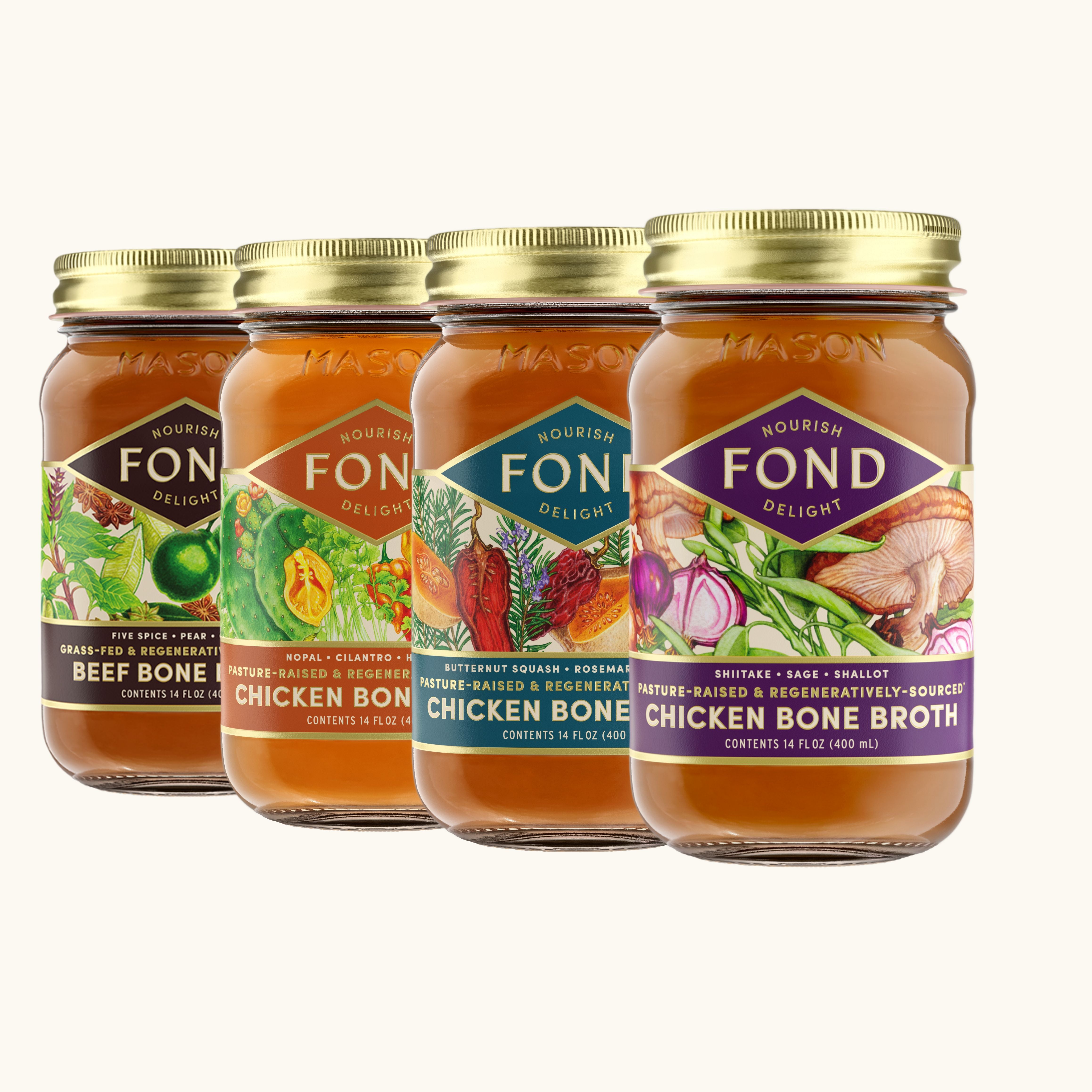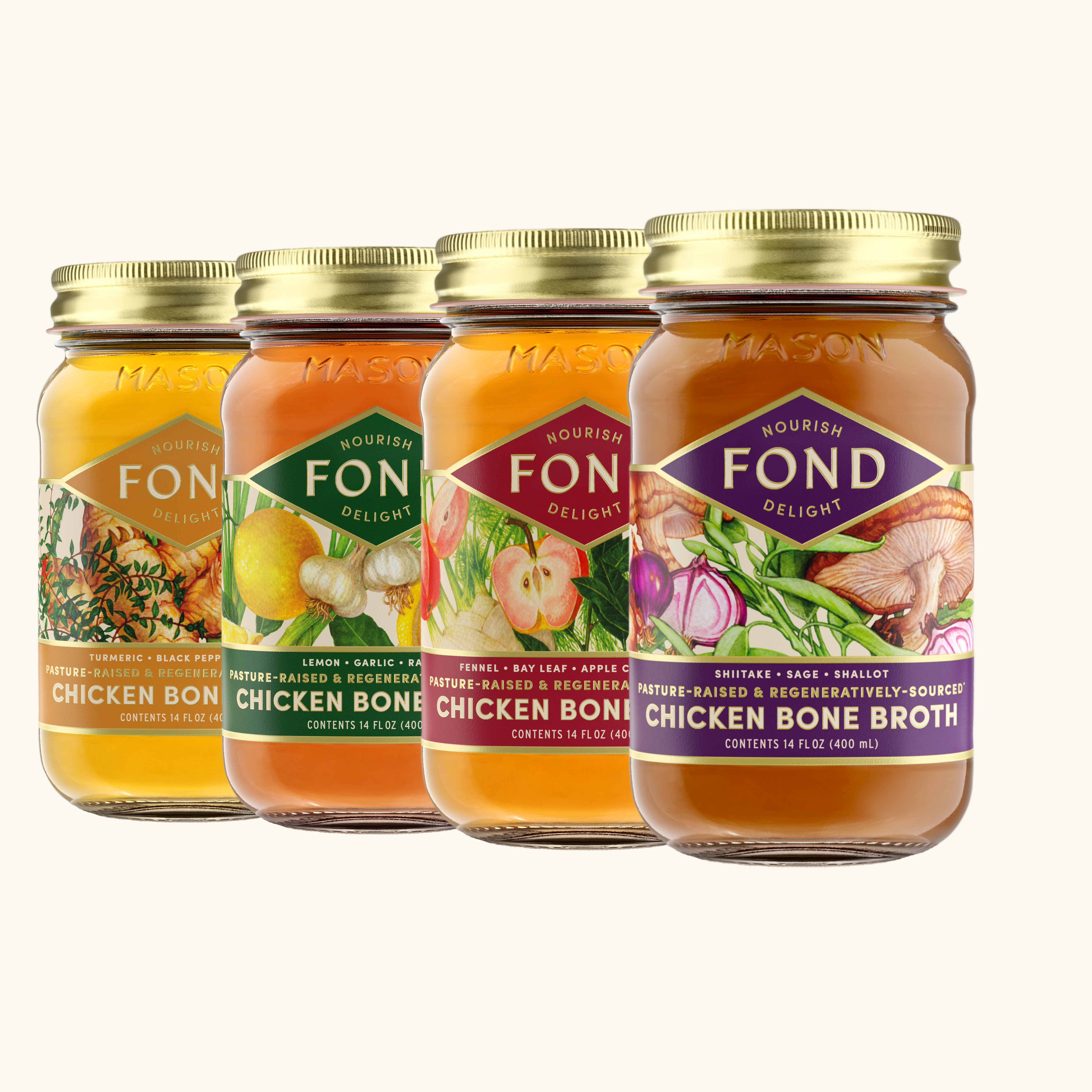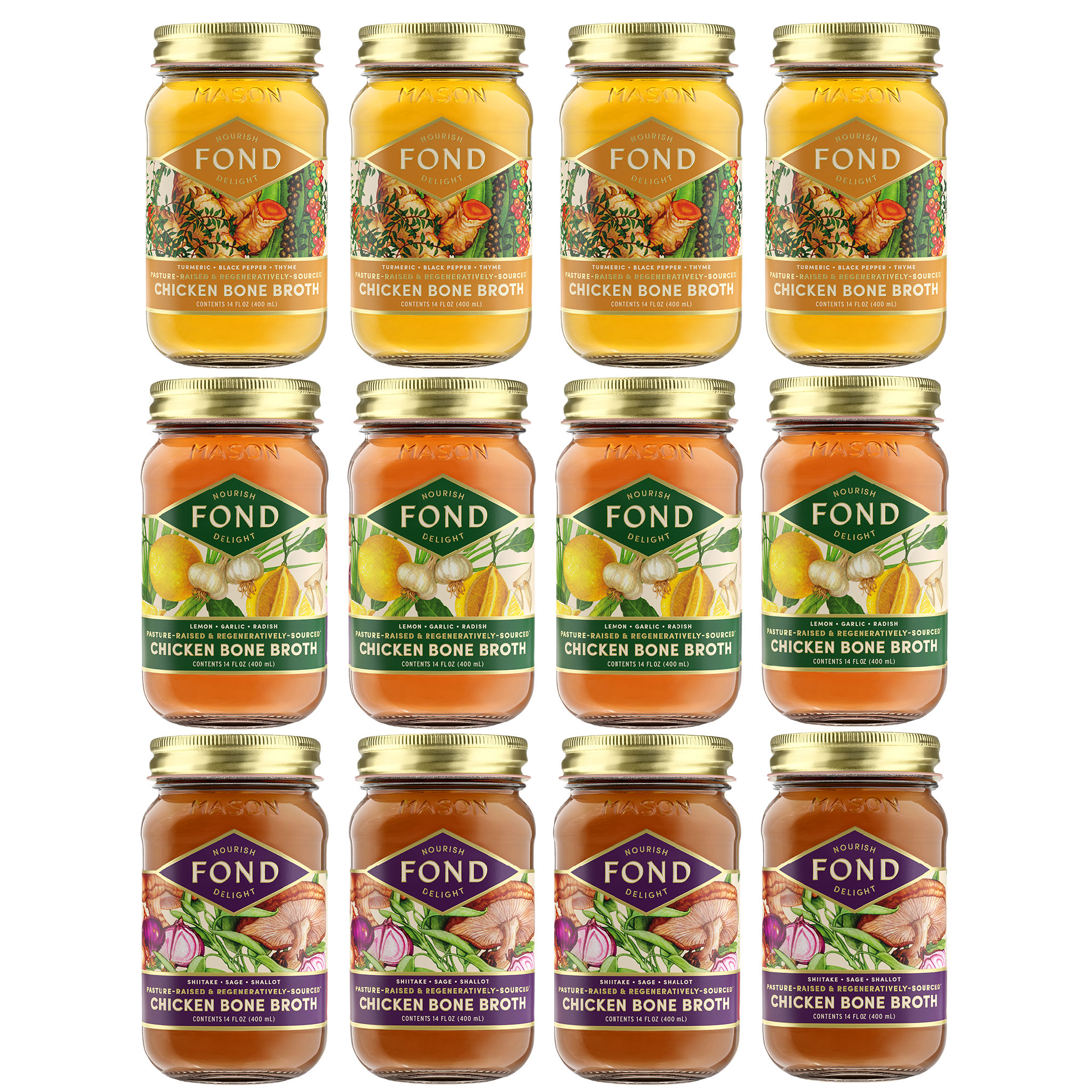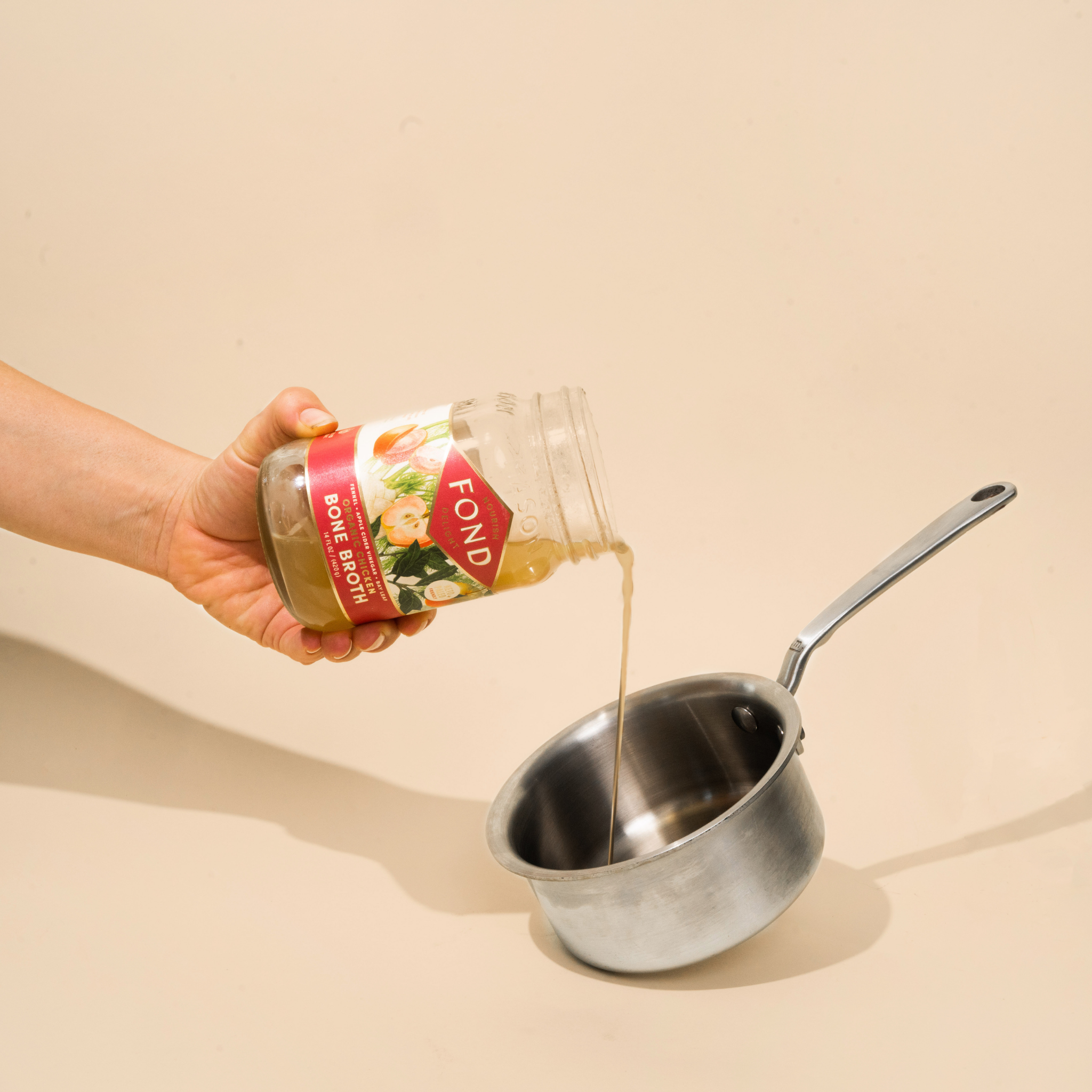There are a lot of options for bone broth these days: refrigerated, shelf stable in glass, frozen, frozen in plastic, shelf stable in cardboard? But which method is the best and why?
Shelf stable bone broth is the best solution for the environment.
Being able to store foods safely and for long periods of time is something that has always been important to humans across centuries. Preserving food used be limited to what could be salted (cured), dried or fermented. While certain cultures were able to use lakes and rivers for ice as early as 500 BC, consistent refrigeration or freezing wasn't a real possibility until 1927!
While we definitely can't go back to life without refrigeration or freezing, it is worth noting that they are not good for our environment. In fact in 1987 the use of chlorofluorocarbons or CFCs was banned in a landmark event and they were phased out worldwide because they were rapidly found to be depleting the Ozone. Unfortunately, this decision only traded one evil for another.
But the effort to get rid of CFCs resulted in many chemical manufacturers choosing to replace them with two groups of chemicals with a different problem – hydrofluorocarbons (HFCs) and hydrochlorofluorocarbons (HCFCs). These refrigerants break down ozone molecules far less, but are extremely potent greenhouse gases. Their capacity to warm the atmosphere – measured as global warming potential – is thousands of times greater than carbon dioxide, with some being up to 13,850 times more potent. This is because HFCs and HCFCs – along with CFCs – also absorb infrared radiation, trapping heat inside the atmosphere rather than allowing it to escape back into space, creating a greenhouse effect that warms the planet. - BBC, "How your fridge is heating up the planet," Isabelle Gerretsen, December 7th, 2020
While we're certainly not asking you to throw away your fridge and freezer, as a food manufacturer we DO take it upon ourselves not to be contributing to the problem.
While the history of canning starts with France's smallest dictator, canning at its simplest form is an innovative technology that preserves food in an airtight container from 1 - 5 years, and in some cases it preserves food for much longer. Canned food found from the shipwreck Bertrand was determined to be safe to eat after the National Food Processors Association determined there was no microbial growth even after 109 years!
Canned food saw a huge demand in World War I. Widespread complaints among soldiers lead to "meals in a can" which were later improved for widespread civilian sale.
Shelf stable bone broth preserves nutrients, refrigeration and freezing do not.
Although some people believe that the nutritional quality of canned foods are less than that of fresh or frozen foods, studies have found that the nutritionally available dietary fiber and vitamin content is the same or better than that of frozen. In addition, they found that even though initial nutrient degradations happen in cooking, in the end shelf stable products have more nutrients than their frozen or refrigerated counterparts due to the absence of oxygen in the containers!
Let's explore why. While the initial heating of the product can cause loss of water‐soluble and oxygen‐labile nutrients such as vitamin C and the B vitamins. These nutrients are relatively stable during subsequent canned storage owing to the lack of oxygen. Frozen products by contract lose fewer nutrients initially because of the short heating time in blanching, but they lose more nutrients during storage owing to oxidation.
There are other specific examples I'd like to highlight. Let's look to dietary fiber for example. The heating process during canning was found to make dietary fiber more soluble and more readily fermented in the colon.
Finally, certain foods have higher levels of beneficial chemicals when cooked. For example, canned tomatoes actually have higher levels of available lycopene than fresh or frozen tomatoes.
It is worth mentioning that our bone broth is also cooked at a low temperature over a long period of time. This means we are able to continue to draw nutrients (minerals, vitamins, collagen) from the bones and connective tissue without going to high temperatures that cause significant nutrient die off. This gives our bone broth the trademark quality of a good quality culinary broth, clear and rich unlike the cloudy bone broths you get from boiling the broth and emulsifying the fat which clouds the flavor.
Shelf stable bone broth in glass is the best solution for taste and to prevent container leaching.
Ever wonder why our bone broth tastes so good? There's actually science to back that up! Just like second day soup or bolognese that continue to meld after cooking, our botanical infusions continue to permeate our bone broth even after the jars are sealed! This makes them deep and rich and full bodied by the time you take your first sip!
As a secondary, but no less important piece of this puzzle, our vessel - glass jars - created for pure taste and flavor with no chemical reactions that happen with the packaging even over time.
Cardboard and plastic leaching are real factors. While plastics are the biggest source of leaching, even inks used on the packaging can eventually end up in the product. Tetra Pak had to phase out the use of a printing ink component called isopropylthioxanthone because it was found in millions of liters of infant formula.
Even when the wrapping comes off, you inevitably ingest some of the container. Chemical & Engineering News, Chemicals Leach From Packaging, Food and drugs just can’t leave their wrappings behind by Sarah Everts, AUGUST 31, 2009
Thankfully and intentionally chosen by our team for this reason, glass is as inert as packaging can be. It is considered the safest material in the packaging industry with an extremely low-leaching potential. When leaching does occur it is in recycled glass where the jars are broken down and remanufactured, not the jars FOND uses. Glass is such an effective protector that certain products packaged in plastic add a layer of silicon oxide glass between the plastic and the wine. Seems like there's a simpler solution - ya?
Shelf stable bone broth is the most convenient option.
With shelf stable bone broth, to enjoy all you need to do is open a jar and warm it to a simmer. That is all the thinking involved! With frozen bone broths you have to think ahead to thaw it out in the refrigerator or worse put it in the microwave to thaw it quickly! No thank you.
Refrigerated bone broths take up space in the refrigerator and really only have 1 month of use - even with a good fat cap on the top.
With FOND you can have weeks of bone broth at your fingertips whenever the craving or culinary inspiration strikes!
We hope you enjoyed this fun and informative deep dive into the benefits of shelf stable bone broth, why it is the best for the environment, the best for you, the best for the nutrients inside and why this was the easy choice for our team here at FOND.













